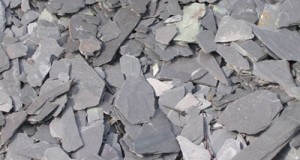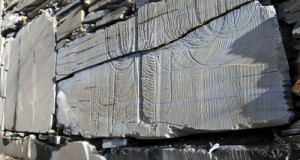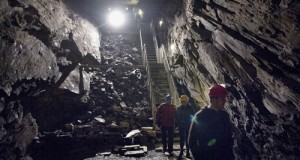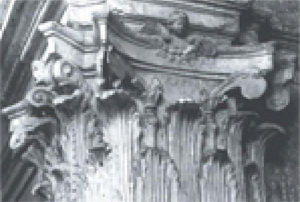
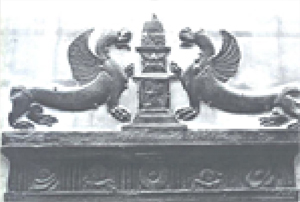
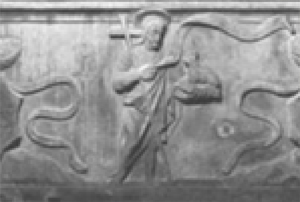
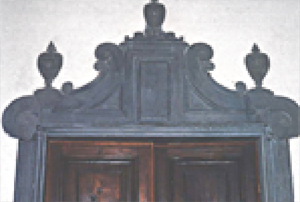
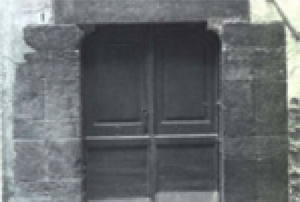
Slate is a metamorphic rock formed by the progressive sedimentation of very fine clay produced by the fragmentation of land forms. Its main characteristic is strong resistance to weathering and as a result of its cleavage it can easily be split into thin or very thin sheets. It is thought that slate was first used about 2200 years ago in the Tigullio area of Liguria between Lavagna and Valle Fontanabuona. Its use precedes the era of Roman domination. In fact, a necropolis was discovered at Chiavari, near Lavagna, with tombs made entirely from slate. Its use as a roofing material dates back to ancient times and reached its peak during the middle ages and then in Renaissance times. The first deposits to be worked intensively from the 12th Century were Uscio and Recco in the Fontanabuona Valley. Others were to be found in the Cuneo area of Piedmont and Valle Camonica in Lombardy. In recent times slate has made a comeback in architecture and is being used on historical buildings for renovation and restoration work and in interior decorating, finishing and design.
Slate is a metamorphicrock of sedimentary origin and has a particularly marked fissility which gives it the special characteristic of being easily split or cleft into parallel sheets with a blade, a technique known as ‘a spacco’ ‘splitting, clefting, riving’. The single, even-shaped, uniform sheets have high elasticity and bending strength. Slate has very low levels of absorption, which added to its very low porosity, protects it from the effects of ice and frost. For these reasons slate makes excellent roofing material. Another no less important characteristic is its thermal stability and resistance to fire, which comes from the very low level of dilatability that makes it almost completely warp resistant. A good level of shock resistance also makes slate tiles very suitable for use in flooring, paving, cladding, skirting, etc.
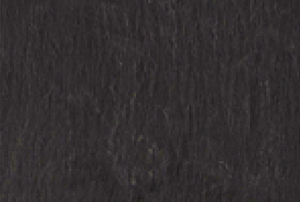
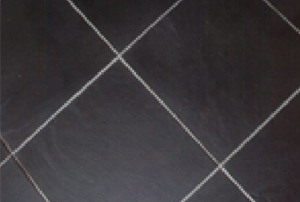
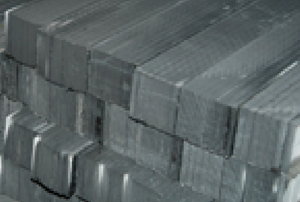

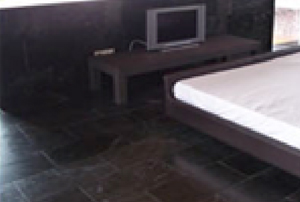
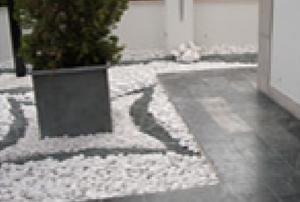
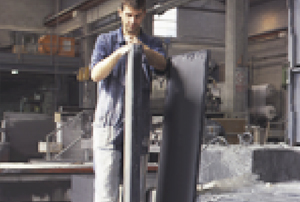
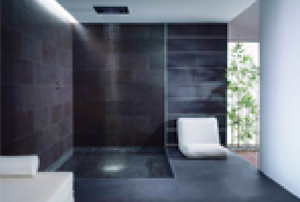
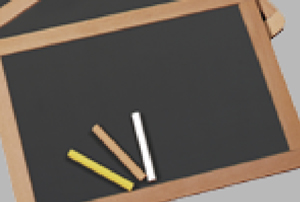
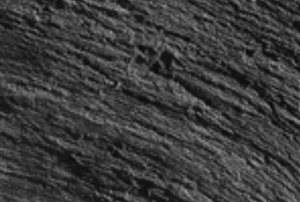
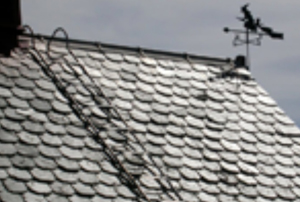
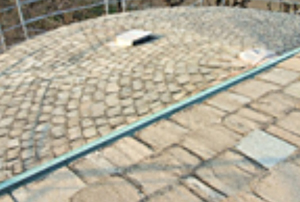
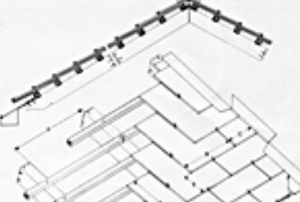
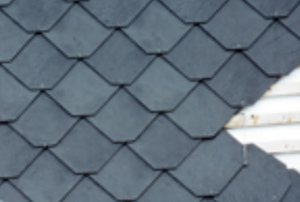
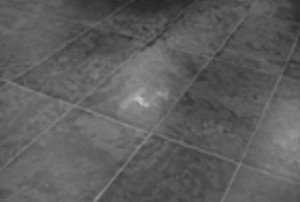
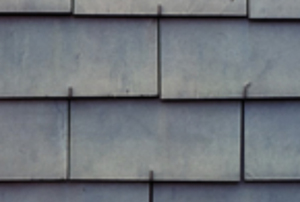
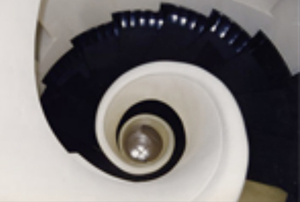
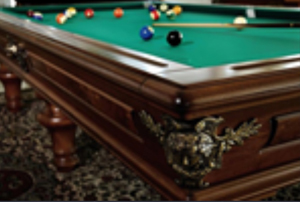
Slate is traditionally used as a roofing material, for outdoor paving, indoor flooring tiles and portals, as slabs to cover steps and stairways and naturally as school blackboards. It has mechanical characteristics which make it ideal for billiard table tops. As a matter of fact, since they were first invented by the Egyptians, billiard table tops were made of wood, but in 1826 a London manufacturer replaced the 10cm thick oak tops with 5cm slate tops thus improving the weight, elasticity and resistance of the billiard table. It was in fact the billiard business which, from 1950 onwards, constituted the main use of slate and created a considerable opening for the business in the US market. A few decades ago, thanks to technological developments in the industry, slate began to be used in architectural and interior design, in the form of shelves, tables, benches and various different kinds of furnishing items. Besides increasing the ways in which slate can be processed, technological development has made it possible for it to reach levels of commercial competitiveness which would otherwise have been impossible when it was worked manually.
Slate can be found all over Northern Italy and has been extracted for many centuries in the Liguria region, historically in the coastal area between Lavagna, which in Italian means ‘chalkboard’, and Chiavari. More recently the quarries being mined are at Recco and Fontanabuona, all located in the province of Genoa.
As quoted in the Geographic, Historical, Statistical and Commercial Dictionary of the States of H.M. the King of Sardinia, published in 1840 and compiled byGoffredo Casalis, Italian abbot and historian (1781-1856): …there were 48 slate quarries in the Lavagna and Cogorno areas alone, these being well-noted for the number of finished slates produced to fulfill the needs of the two coastal areas as well as overseas nations, although they are also shipped to Naples, Tuscany, Gibraltar, Portugal, France, Corsica, Sardinia, Trieste, Odessa.
A type of schist, similar though different but incorrectly called slate, is used as a roofing and cladding material in Alpine zones, particularly in the Cuneo area of Piedmont and the Val Camonica in Lombardy.
Since the old yard at the railway station in Lavagna is no longer in use, stone is now transported solely by road, even long distance.
